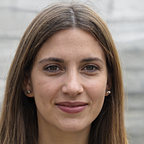What is Convolutional Neural Network(CNN)? | 26 Things You Should Know About it
4 min readFeb 26, 2020
What is Convolutional Neural Network(CNN)?
Convolutional Neural Network is a machine learning method for introducing feature representations into a neural network. This reduces the amount of inputs that must be learned. (Original Source : http://www.deep-learning.co.uk)
Below there are 26 things you should know about Convolutional Neural Network.
26 Things You Should Know About Convolutional Neural Network (CNN)
- Convolutional Neural Network can be viewed as the culmination of a number of previous neural network techniques that took place over the last 60 years. Although it uses an orthogonal difference basis, convolutional neural network (CNN) has been in use for more than a hundred years.
- Learns by using a standard optimizer.
- Trained to do a specific task. A problem is a set of variables or input variables that need to be fed to the network.
- Trained using its own self-invented non-linearities in a very basic fashion.
- Needs a lot of iterations.
- Makes differentiable to make learning possible for it. This kind of network goes from samples to a binary label to an actual label in an easy-to-understand way.
- Not uses a hidden layer, instead it uses a Convolutional layer to combine the output of the previous layers into the final output.
- Learns to recognize arbitrary features of scenes, or whatever inputs it has, so that it can solve sequences.
- Implemented as an ensemble or as an ensemble of artificial neural networks (ANNs).
- Enables applications to access raw input and outputs of a (surprise) network. In other words, a simple neural network can now be connected to a number of other deep learning models, including convolutional nets, LSTMs and other types of deep learning models.
- Divides one image into two portions — the left and the right — using forward and backward propagation.
- Generates the images using the dataset from user, Then add to the output the information gathered by the network, for example, the unique scene the user is observing and how this scene makes sense in the scheme of things. The left-hand side is from the user’s point of view and is the input to the neural network and the right-hand side is what is being learned by the network.
- Uses to make a rule.
- Designed to be applied with different neural architectures. NNs such as a Dense Logistic Regression can be used in the same way. In the most basic sense of neural network, NNs are learned by applying the appropriate loss function to a data set, and the NN is then used to generalize the error of its own classifier.
- Precisely training its own software is supposed to be a lot more accurate than non-on-board or hidden layer/LSTM/Gaussian neural networks trained on raw data.
- Runs itself. That means when you set a task that convolves, say a MNIST, it will run and then give you back a convolution layer, and when you tell it to use a different MNIST, it will do the same thing, it’ll convolve, run, give back a convolution layer, and then run it.
- Builds with an architecture similar to Bayesian networks. In its latest development version it is also more efficient than its predecessors.
- Capable of learning tasks from data (e.g. classify images), then returning its best accuracy estimate by making predictions over the class space of images.
- Split its input into different sized convolutional layers. This algorithm makes a difference between regularization and no regularization.
- More or less resistant to a little bit, as it has some basic algorithms that have very good accuracy.
- Learns to recognize video patterns, e.g. recognizable objects in faces or dialogue in video and convert to speech.
- Making me wonder if it should be called or used as more than an convolutional neural network.
- Designs for everyday tasks which it will perform when a input is provided to it, for example a predefined number of edges is assigned to represent a face and the network needs to predict how the face appears to a certain probability, with a high accuracy.
- Takes the shape of a network.
- Produced from the open source “ResNet” architecture.
- Adapts a statistical distribution to neurons, and work out how many neurons or how many connection in a particular connection.
Originally published at http://deep-learning.co.uk on February 26, 2020.
